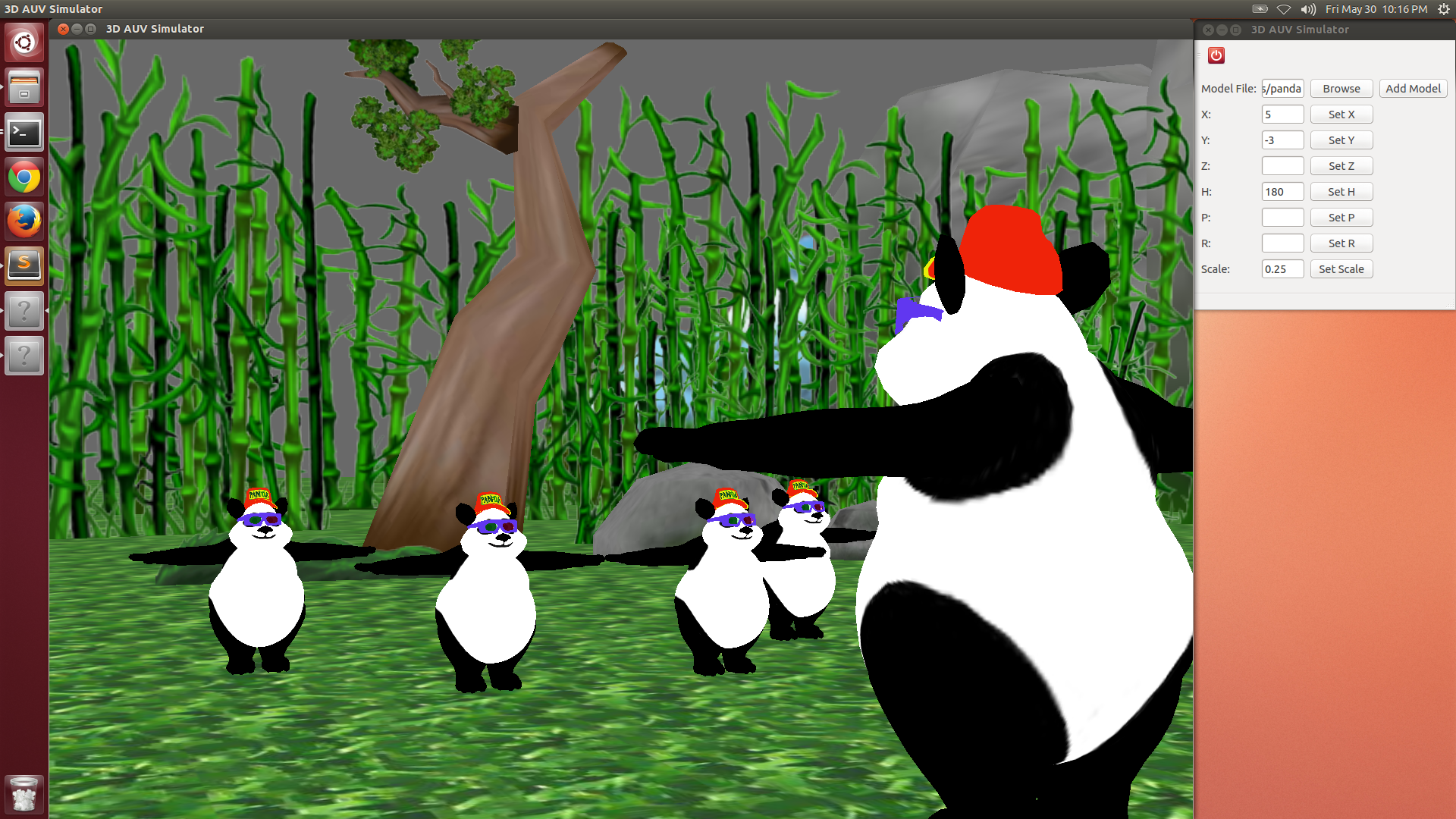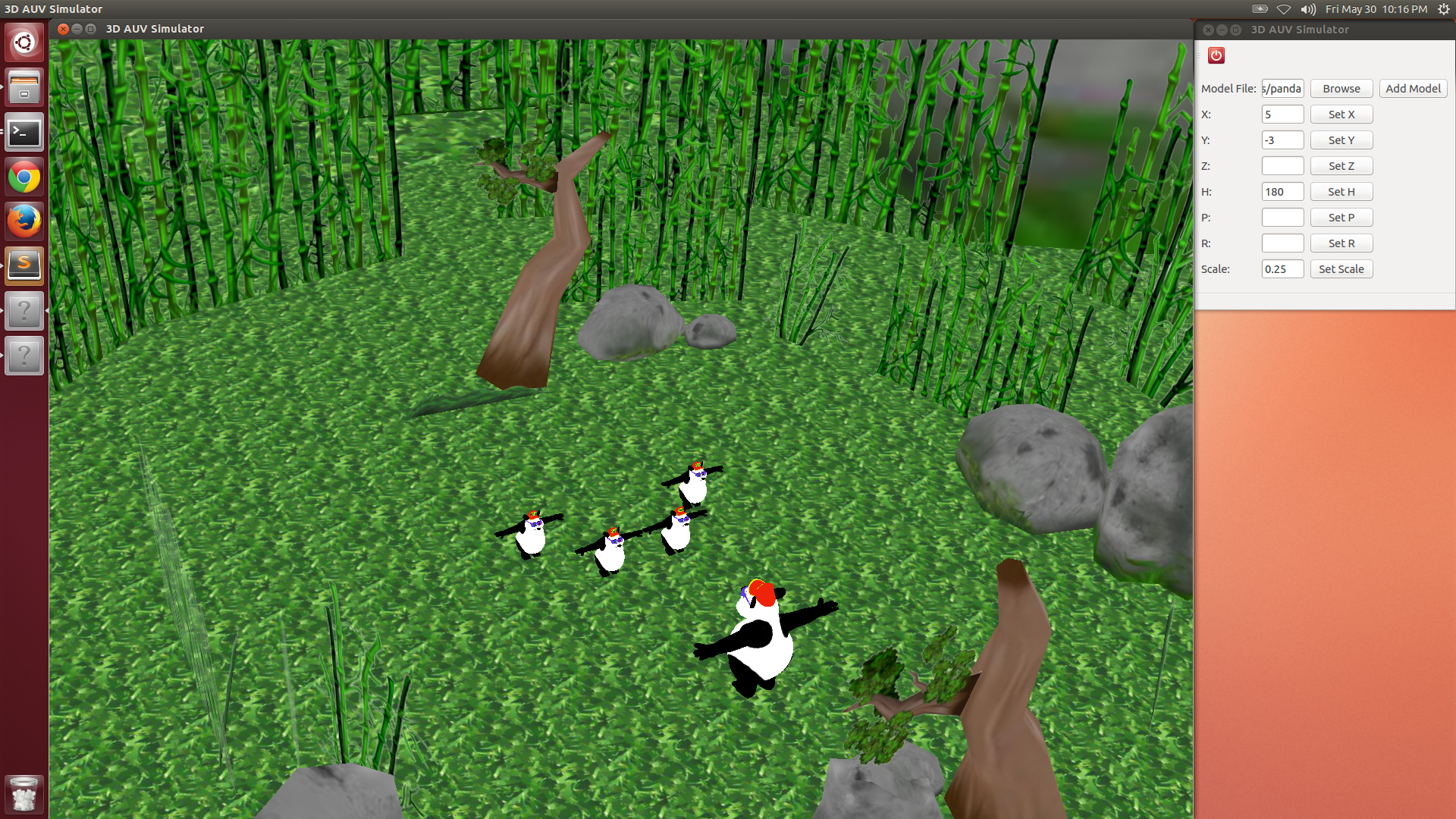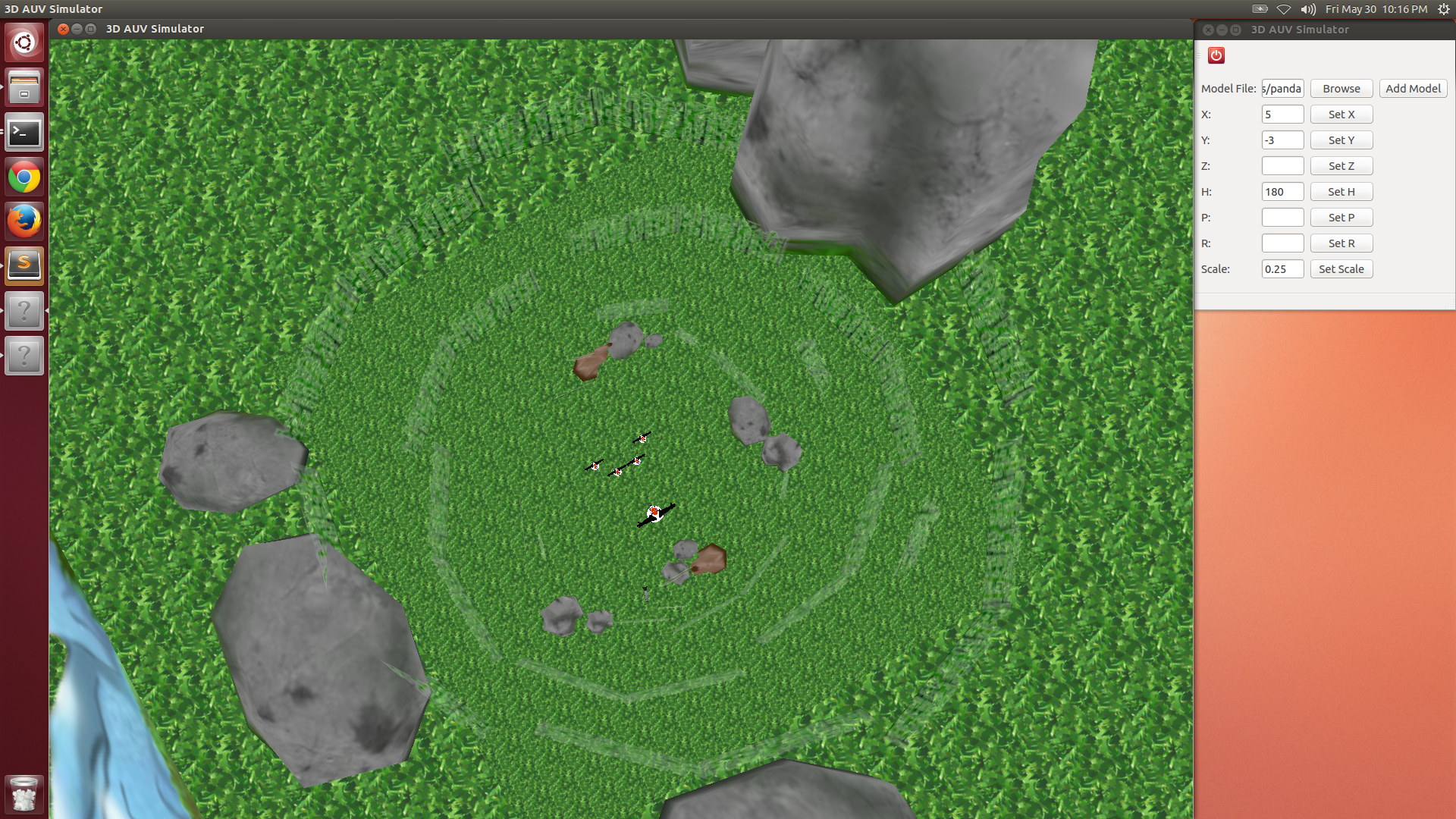
Models were added and positioned using the Pyqt GUI.
pandaManager: Controls the Panda3D thread and the scenegraph used by panda3d to hande all the pbjects in the scene.
eventManager: Controls the flow of data from GUI thread to the Panda3D thread. This is the middleware which helps in the communication between the two modules.
inputManager: Controls the keyboard input.
The next thing I added was a bunch of options to my GUI. This begins the development of what I call the 'environment builder'. The work of this is to provide a GUI to change the scene in Panda3d. I added options like adding new models and changing the position, orientation and size of the models. Placing the models is now a piece of cake using this GUI.

With all these functions in place, I added a few keyboard inputs, one of which is the 'Out Of Body Experience' aka 'oobe'. Using this function, Panda3d allows us to view the scene from any angle using our mouse. This helps to see the environment from different perspectives without handling any additional camera. Below is the screenshot of the 'oobe' mode in use.

This marks the end of the first week of the GSOC program. Till now I am happy to see the application turning out well. I plan to add a lot of features in the next week.
As I mentioned in my previous post, I have added all the code till now to the project's google code repo. The code resides in the simulator folder here.
What's next:
Add a World Map which shows the objects of interest in the scene.
Add a mouse handler to easily select and modify the objects using the mouse.
Add collision to the models.
Add a save state option.